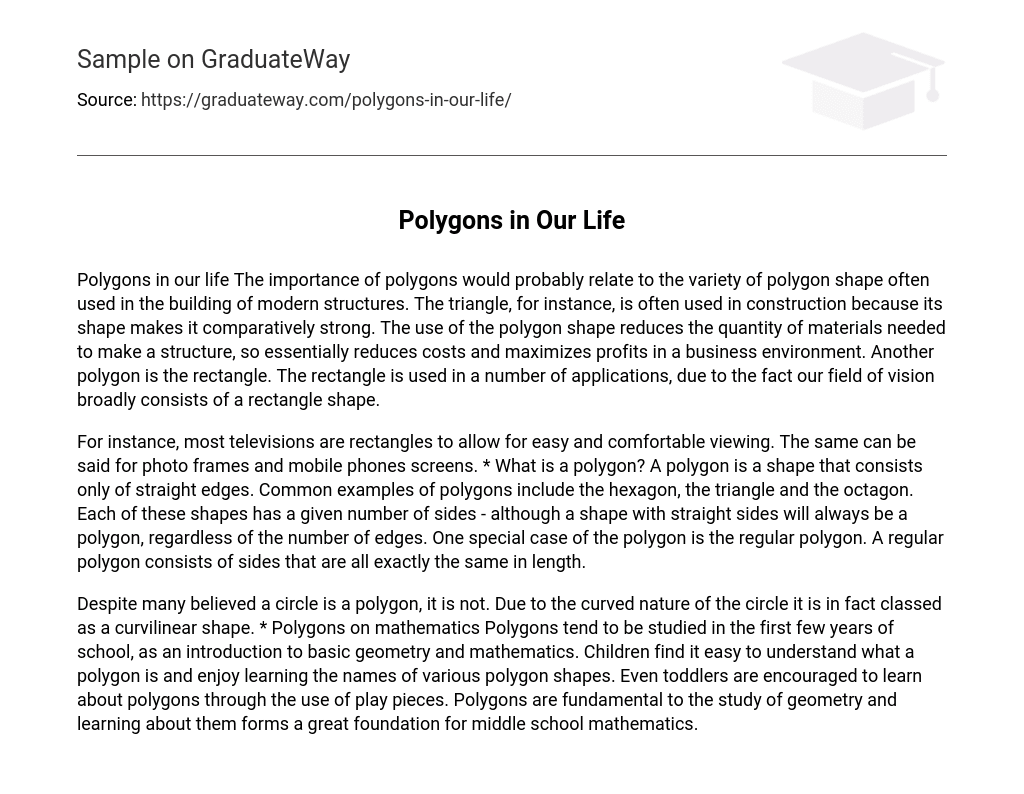Polygons in our life The importance of polygons would probably relate to the variety of polygon shape often used in the building of modern structures. The triangle, for instance, is often used in construction because its shape makes it comparatively strong. The use of the polygon shape reduces the quantity of materials needed to make a structure, so essentially reduces costs and maximizes profits in a business environment. Another polygon is the rectangle. The rectangle is used in a number of applications, due to the fact our field of vision broadly consists of a rectangle shape.
For instance, most televisions are rectangles to allow for easy and comfortable viewing. The same can be said for photo frames and mobile phones screens. * What is a polygon? A polygon is a shape that consists only of straight edges. Common examples of polygons include the hexagon, the triangle and the octagon. Each of these shapes has a given number of sides – although a shape with straight sides will always be a polygon, regardless of the number of edges. One special case of the polygon is the regular polygon. A regular polygon consists of sides that are all exactly the same in length.
Despite many believed a circle is a polygon, it is not. Due to the curved nature of the circle it is in fact classed as a curvilinear shape. * Polygons on mathematics Polygons tend to be studied in the first few years of school, as an introduction to basic geometry and mathematics. Children find it easy to understand what a polygon is and enjoy learning the names of various polygon shapes. Even toddlers are encouraged to learn about polygons through the use of play pieces. Polygons are fundamental to the study of geometry and learning about them forms a great foundation for middle school mathematics.





